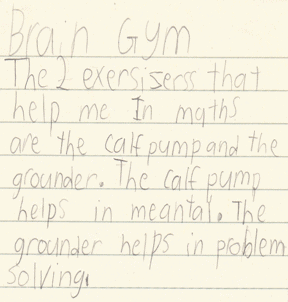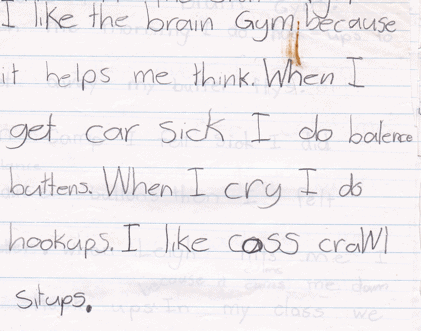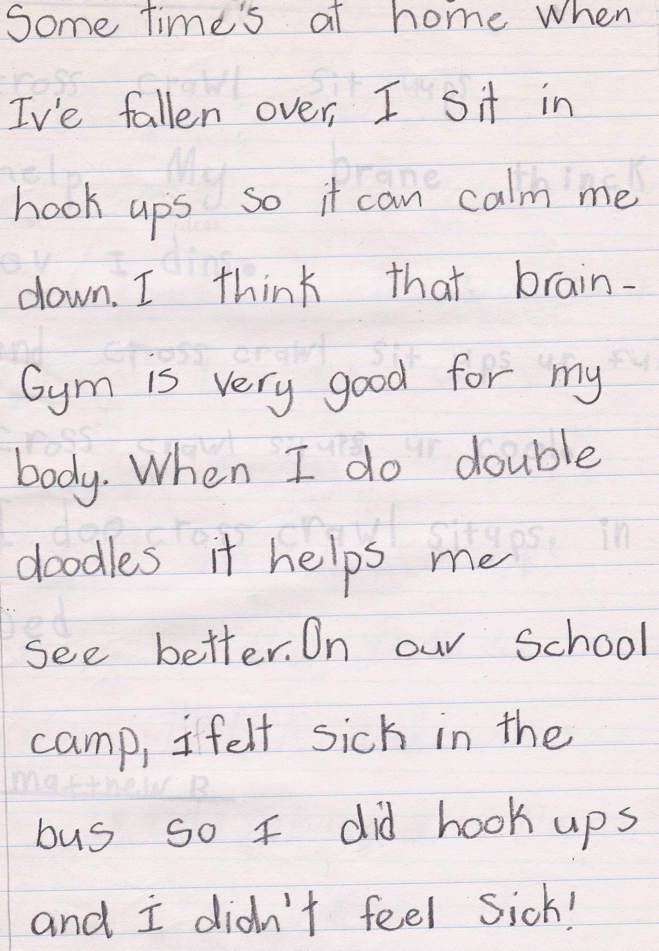Are you a parent who worries about your child’s ability to reach their full potential? Does your child struggle in school or with behaviour issues? Does your child struggle with low self-esteem? Maybe your child has a learning challenge and you wonder how to help? Brain Gym can assist in reducing anxiety and stress so that learning is easier.
Brain Gym® assists teachers to show their students a different way to reach their academic goals. Peak performance in the classroom requires three things: clear goals, the confidence to reach them, and whole body alignment. Equip your classroom with fun, easy movement-based practices.
A teacher’s perspective-how it can be integrated into the school curriculum:
After my first couple of years using PACE (P-Positive, A-Active, C-Clear, E-Energetic) and slowly introducing Brain Gym® movements to my class, I worked out ways to embed it in the daily routine, in Well Being sessions and in specific lessons.
In my year 2/3 classroom I introduced the four Brain Gym® PACE movements in the first week of school. We then started each day with PACE and during term 1, I gradually introduced all the 26 Brain Gym® movements, starting with Energy Exercises. Our fitness break was an opportunity to do the Lengthening Activities such as the Calf Pump. I used this format every year with the junior primary classes I taught.
Once the movements were known, a roster was set up so children would have a turn at being the Brain Gym leader to demonstrate the PACE movements eg. making a toast (setting the goal for the day) through the Sipping Water activity. They would demonstrate the Brain Buttons and we would do them as we practised a skill eg. counting by 5s to 100, saying the alphabet sounds etc After that the leader would choose their version of doing The Cross Crawl and then we did Hook-ups. Finally the leader would choose four classmates, who would choose four different movements. The leader would mark their names on another roster. That way everyone had a turn at being a leader and choosing movements and recording tally marks. At first some children needed support to do this process- to remember the sequence of movements, to speak clearly and confidently, to make a choice of movement to cross the midline, and to be responsible for putting the tally marks correctly on the rosters.
At the beginning of the year in our Well Being lessons we would discuss why we go to school, how we do our best , what we do to listen well and how to be a good friend etc. This would lead to several opportunities for class goals using the 5 step Brain Gym® goal setting process. eg. Listening Balance.
Each term I would organise a Positive Attitude Balance. Each student would write their own individual goal and throughout the day I would check all the goals were written using positive language. Then we would have a session where we did the five steps of the Positive Attitude Balance altogether. The pre-activity often included scoring how positive they were out of 10 and drawing a quick picture of themselves colouring any body parts that felt worried or tense for the goal. For the Learning Menu, some children chose one movement and others chose a partner so they could do both Positive Points and Hook-ups together. Finally the children had great fun saying their goals all at once. In the following term the children would reflect on the previous goal before making a new one.
The children were encouraged to use Brain Gym movements in class when they felt ‘stuck’ doing a task. If they needed to settle after a break we would do PACE again. At the end of each term, I would ask the children to write down their thoughts and let me know if they thought Brain Gym® was assisting them. Here are some interesting comments from year 3 students:
August


December



